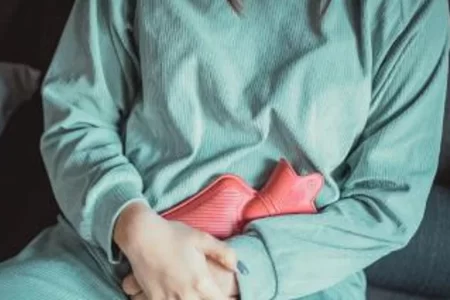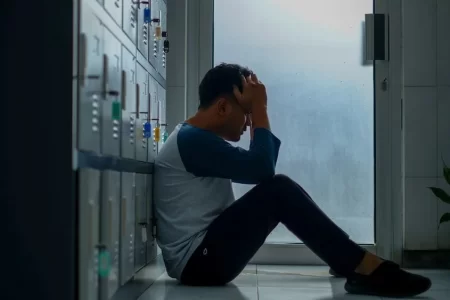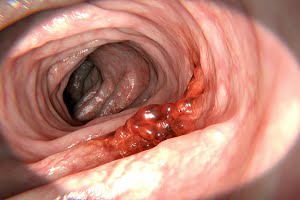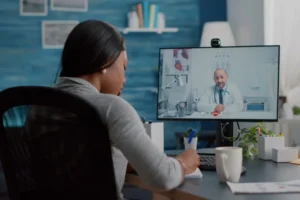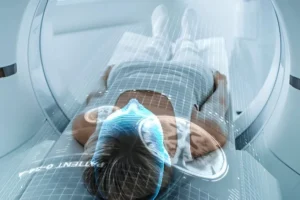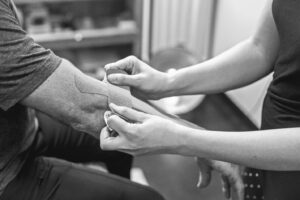Exercise for Hemorrhoids
- Updated on: Jun 10, 2024
- 6 min Read
- Published on Sep 4, 2022
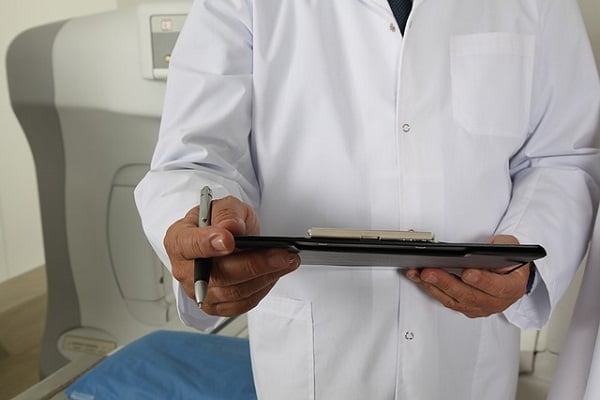
Hemorrhoids and Exercise
Hemorrhoids occur due to inflammation of blood vessels of your anus. It occurs due to prolonged straining and pressure due to constipation. Large populations suffer from hemorrhoids and try various methods to get rid of hemorrhoid to get some relief from disturbing hemorrhoid symptoms.
One common and effective home remedy for hemorrhoids is exercise. Exercise helps in maintaining and preventing the occurrence of piles. Maintaining a healthy balance between exercise and hemorrhoid symptoms is essential . Physical exercises help in keeping up with a regular, asymptomatic bowel movement, but if patients undergo strenuous exercises, heavy resistance training, or weight lifting, then the symptoms may alleviate and create a huge problem.
Read More About Diet for Hemorrhoids
Read more About Home Remedies for Hemorrhoids
Exercise for Hemorrhoids
You can try some pelvic floor physiotherapist techniques and exercise for piles to provide relief from troubling hemorrhoid symptoms.
Pelvic Floor Exercises
Pelvic floor exercises will make your pelvic muscles stronger and provide a long-term solution for hemorrhoid patients. Stronger pelvic muscles allow easy removal of stool and avoid unnecessary straining of anal and rectum muscles.
If your anal sphincter gets tensed or stressed during a bowel movement, it may lead to hemorrhoids. Pelvic floor exercises promote anal sphincter control and reduce pressure on the anus during a bowel movement.
If your stool consistency is not right, if your stool is too hard or too soft, it may increase itchy hemorrhoid tendency. Ideally, your stool consistency should be smooth and lie between types 3-4 on the Bristol stool chart. An average bowel emptying capacity ranges from 3 times/ day to 3 times/ week.
Empty Your Bowels without Straining
Position
Ensure to sit in the correct position during a bowel movement to reduce pain and long-term straining of anal muscles and promote hemorrhoid tissue healing.
- You should sit on the toilet seat and never hover over it
- You can place your hands on your thighs to provide support to your upper body
- You can widen your hips by moving your legs apart
- You can lean forward to maintain the inward curve of your lower body
In some cases, people may gain comfort by positioning your knees higher than the hips. You can place a paper roll or a stack of books under your knees.
Bowel Emptying Technique
You should practice an effective bowel emptying technique to avoid straining and discomfort to your hemorrhoid. One of the common techniques is ‘Brace and Bulge’ technique, which relaxes the anal muscles and reduces strain and pain on hemorrhoids.
When you feel an urge to empty your bowels:
- Sit on the toilet seat (as described above).
- You can try a deep breathing technique in this position for about 4-5 breaths to relax your muscles around the anus region.
- You can make your wrist wide and bulge your lower abdomen forward. This position opens your anal sphincter.
- You should not pull your belly inwards as it may tighten the anal sphincter and worsen your hemorrhoids.
Avoid Unsafe Exercises
Regular exercise promotes healthy bowel movement. But, certain exercises may alleviate hemorrhoid problems and cause recurring symptoms. You should avoid the following exercise for piles:
Heavy Weight Lifting – You should practice pelvic floor safe strengthening training techniques and avoid heavy weight lifting exercise for hemorrhoids.
High Impact Exercises – involves placing both your feet off the ground simultaneously, such as running, jumping, or skipping.
Intense Core Abdominal Exercises – These exercises create pressure on pelvic muscles and make it difficult to relax them, such as Pilates exercises.
Deep Squats- They increase pressure on rectum muscles, thereby worsening your hemorrhoids. Certain yoga exercises involving deep squats should also be avoided.
Mild Cardiovascular Exercise
Mild cardiovascular exercises help in treating and preventing internal hemorrhoids. They increase blood circulation in the body, especially in the rectum region. Increased blood circulation prevents the formation of painful blood clots in the hemorrhoids and allows them to heal faster.
If you stand or sit for long periods, an excessive strain is subjected to your rectum blood vessels and can worsen your piles. You should add regular 20 minutes of mild cardiovascular exercise to your routine, such as walking, jogging, or swimming. By practicing any cardiovascular exercise for 30 minutes in a day, hemorrhoids can be avoided.
Torso Circle Exercise
Torso circle exercise helps in treating internal hemorrhoids. They reduce the amount of blood in the swollen rectal veins. They centrifuge the rectal veins and act as a beneficial exercise to cure piles.
Steps for Torso Circle Exercise
- Make a push-up position with your feet supported to a wall or hard substance.
- Rotate your torso 3-4 times in one direction and then in another direction. Steadily, you can increase the number of rotations in each direction.
- Try to hold your stomach in a whilst position, if possible.
- Repeat this exercise three times a day.
Read More about Bleeding Hemorrhoids
Stars Forward Bends
Stars forward bend is an adaptation of yoga forward bend exercise. It helps in treating external hemorrhoids by reducing the swelling of the anal vein.
Steps for Stars Forward Bend
- Stand on your toes with your arms pointing towards the sky.
- Maintain this position and bend forward to touch your hands to the floor.
- The slowly return to the initial position and repeat this exercise.
- Do not perform this exercise in rush or strain your muscles.
- Repeat this exercise twice in a day.
Muscle Toning Exercises
Hemorrhoids can be treated by toning your abdominal and rectal muscles. You can lie down in an elevated pushup position and contract your abdominal muscles for about 30 seconds. Similarly, you can perform a buttock press by contracting for rectal and buttock muscles and holding the contraction for a few seconds. Repeat these toning exercises several times a day.
Kegel Exercises for Hemorrhoids
Kegel exercises are highly beneficial in treating and preventing hemorrhoids. They help in strengthening the anal muscles, pelvic floor muscles of your body. Strengthening your anal muscles increases blood circulation in the anus and helps prevent the conversion of internal hemorrhoids to external hemorrhoids. They also help in treating the existing hemorrhoids.
You can try some simple Kegel exercises, such as contracting your anal muscle and holding it for three seconds. You should contract for 10-15 times during each exercise. Repeat this exercise five times to complete a set and perform three or four different sets of Kegel exercises throughout the day.
Kegel exercises work on the pubococcygeus muscle of your body. It is one of the pelvic floor muscles which help in controlling urine flow. Do not pressurize or overwork your pubococcygeus muscle. If you experience severe discomfort while exercising, do consult a doctor.
The Long-Cycle Exercise
- Contract the pubococcygeus muscle for 10 seconds.
- Then relax the muscle for 10 seconds.
- Repeat these steps 15 times in a day.
- After finishing the long-cycle exercise, relax your body for 30 seconds, and then begin with the short-cycle exercise.
The Short-Cycle Exercise
- Contract the pubococcygeus muscle for one second and then relax for one second.
- Repeat the contraction and relaxation for 10 times.
- Perform these steps 15 times in a day.
Yoga for Piles
Doctors believe that yoga and stretching exercises are beneficial for treating and preventing hemorrhoids. Yoga for piles involves stretching and bending abdominal and thighs muscles. Stand up straight and lift your legs to a 90-degree angle one at a time in front of you. Repeat the lifting exercise for 3-10 minutes slowly without pressurizing your muscles. They increase blood flow to hemorrhoids and help in faster healing, and provide relief from piles.
You can try anal exercise. You push your anus down, similar to when you expel stool, and then relax your muscles. You can start with 5 times a day and then increase it to 20 times a day. You may face trouble in the beginning, but it will be highly effective in the long run.
Some common yoga asana for hemorrhoids are as follows:
Basti kriya
Basti kriya helps in cleaning your colon. It eases the peristalsis movement of your colon and rectum region to allow faster elimination of stool. It is practiced in the morning with an empty stomach. These are various types of basti kriya such as jala basti and sushka or sthala basti.
Read more about Sitz Bath for Relief from Hemorrhoids
Ashwini Mudra
Ashwini mudra is signified as the horse position. It involves the rhythmic contraction of the anal sphincter muscles. It is specialized for treating diseases of the rectum, hemorrhoids, and constipation.
Pavanamuktasana
Pavanamuktasana is also known as wind relieving pose. This asana is for beginners. It helps in relieving gas, constipation and hemorrhoid pain.
Baddha Konasana in Sarvangasana
Baddha Konasana in Sarvangasana involves a bound angle pose in shoulder stand position. It reduces the pressure on intestinal tract, thereby controlling hemorrhoids and its pain.
Baddha Konasana in Sirsasana
Baddha Konasana in Sirsasana involves a bound angle in headstand position. This asana helps in stretching your trunk up and raises your hips. The coccyx and the back of your pelvic are tucked in. Baddha Konasana in Sirsasana helps in relaxing your abdomen and reduces rectal swelling.
Baddha Konasana
Baddha Konasana involves the bound angle pose. This asana strengthens your bladder and is beneficial for menstrual problem and hemorrhoids during pregnancy.
Vajrasana
Vajrasana involves the thunderbolt pose. This helps in relaxing your legs. It relives constipation and strengthens muscles of your legs and back.
Balsana
Balsana involves child’s Pose. It helps in relieving constipation, gas problems and hemorrhoid pain.





